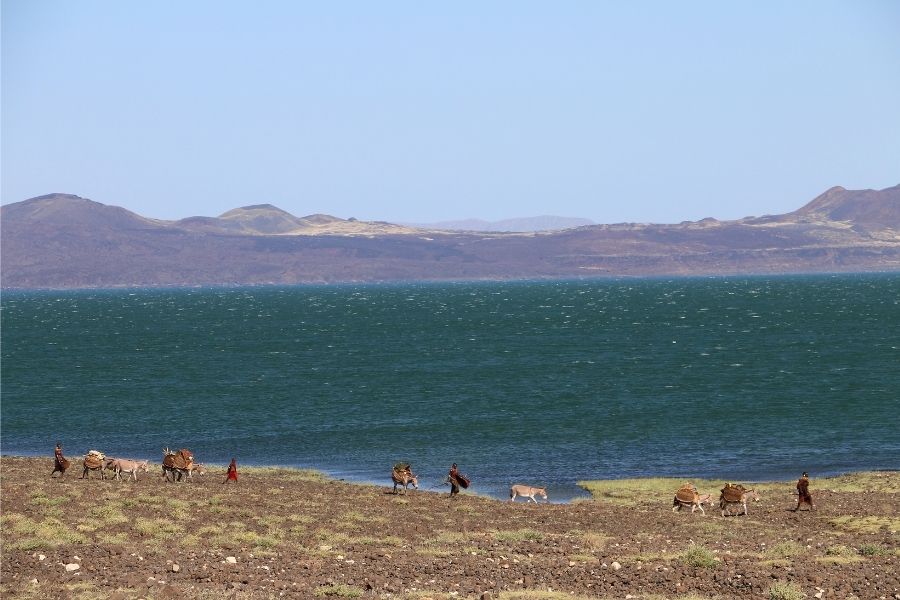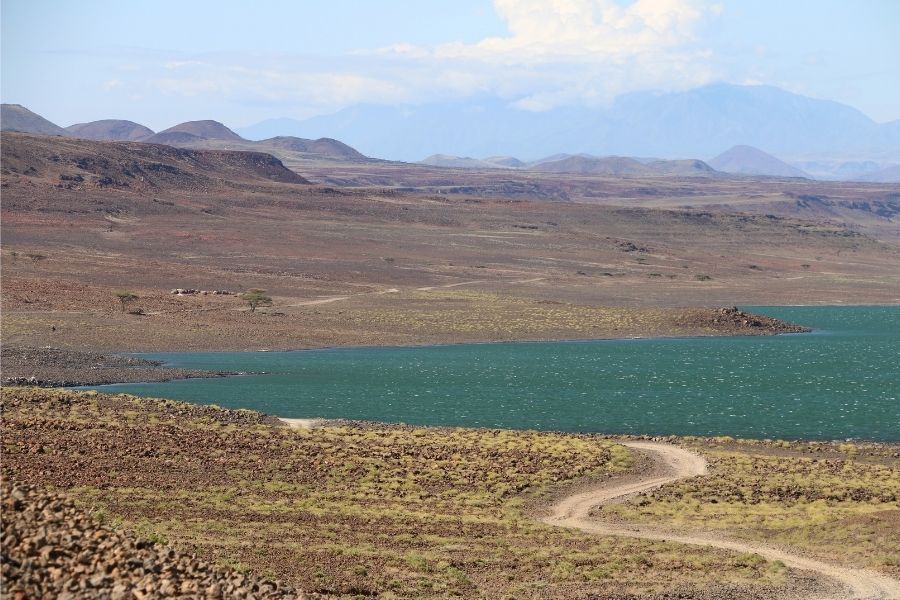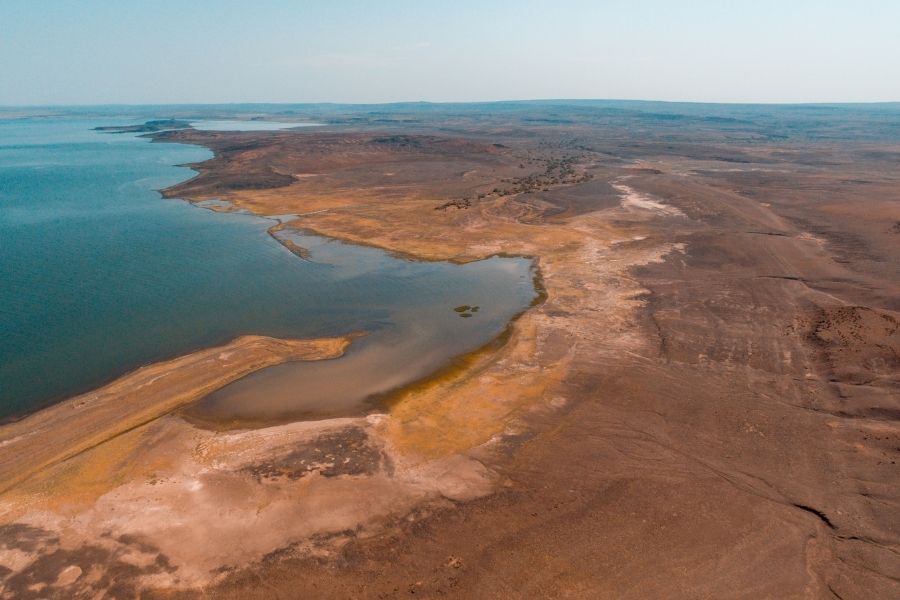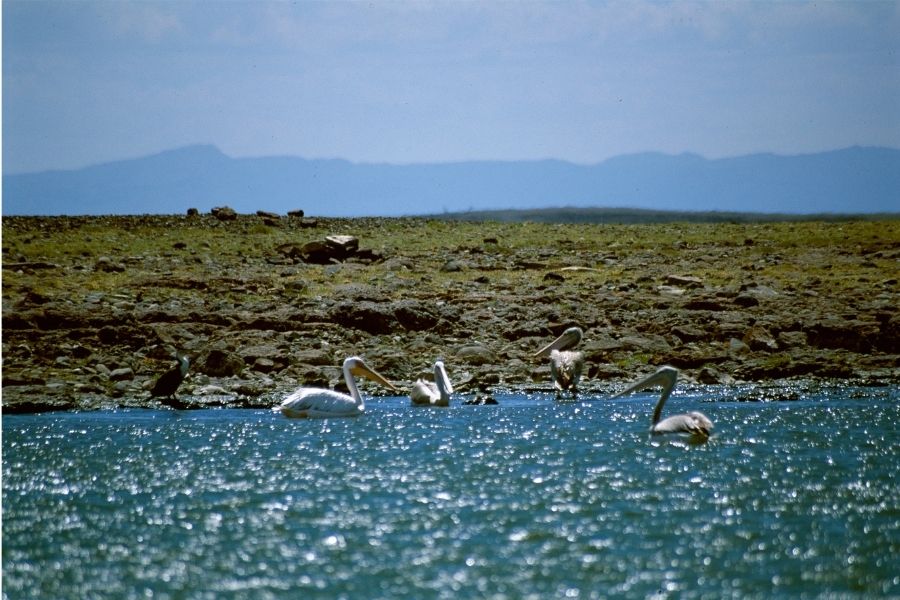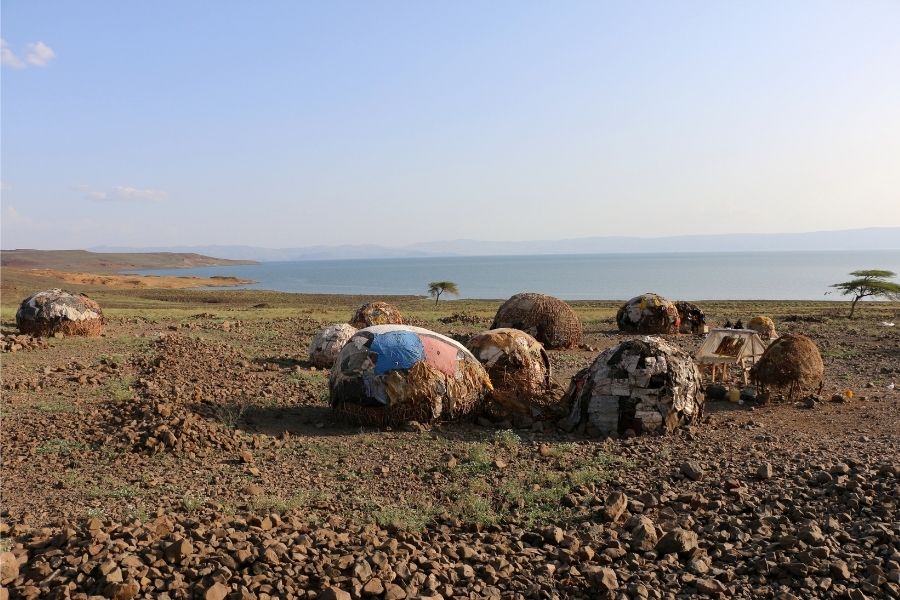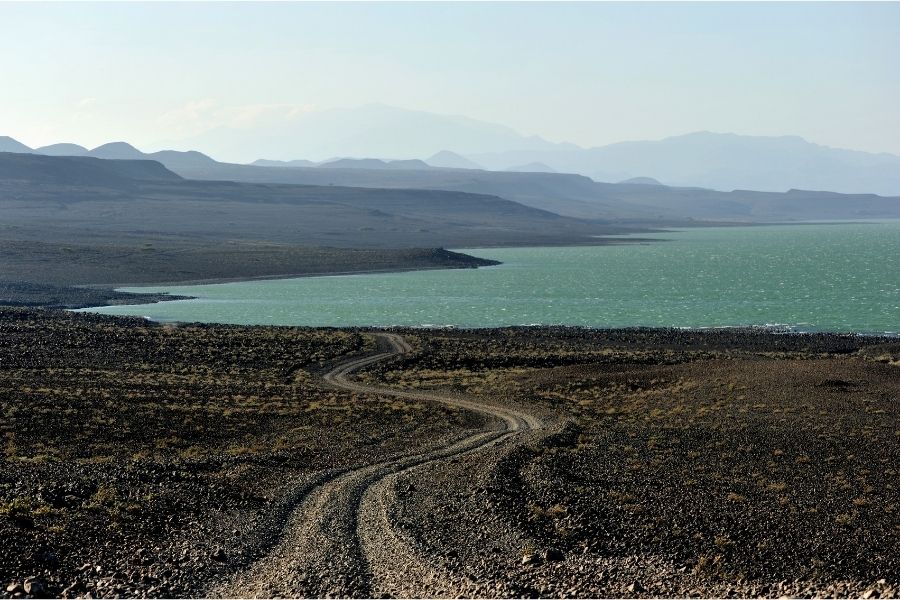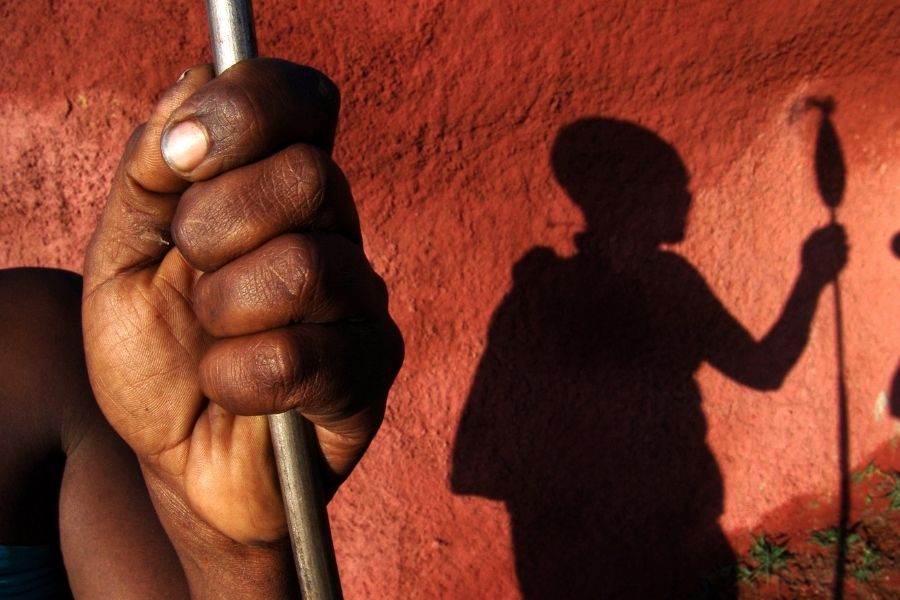Emerging starkly from the blue-green waters of the largest permanent desert lake in the world, Lake Turkana, the Central Island is made up of three active volcanoes that belch sulphurous smoke and steam.
Three crater lakes, Crocodile Lake, Flamingo Lake and Tilapia Lake, provide breeding grounds for the world’s largest concentration of Nile crocodiles.
Central Island has a campsite where visitors can enjoy the beautifully haunting sight of the lake’s luminous waters wash up onto a black lava beach while the moon rises over the menacingly smoking craters.
KEY FEATURES
Climate:
Scorching hot and arid (especially December-March) June and July are the coolest months.
May-September very strong winds blow both morning and evening.
Rainfall less than 250 mm pa and in some places it may not rain for several years.
Vegetation
The vegetation is scant, but some of the sheltered areas are overgrown with think grass and bushes for a short period each year.
Wildlife
The islands are home to hippo, bats and the world’s largest Nile crocodile population.
Birds
More than 350 recorded species including large flocks of flamingos.
Fish
There are 60 recorded species of fish in the lake.
MAIN ACTIVITY.
Game viewing.
HOW TO GET THERE
- By Air: Access to Lake Turkana is usually by air and there are two all-weather airstrips. Also in Loiyangalani
- By road: The Lake is a three day drive from Nairobi via Marsabit and North Horr, or Maralal and South Horr. Alternatively travel by road from Nairobi to Kalokol on the lake’s western shores, via Kitale and Lodwar. From Kalokol boat hire services are available to Central Island.
ATTRACTIONS
Crocodile Kingdom
Survivors of an epoch long before mankind, Lake Turkana’s estimated 12,000 crocodiles have not changed in 130 million years. Despite their monstrous size and formidable appearance they are generally inoffensive creatures living in perfect harmony with their environment and feeding on the lake’s prolific fish.
The world’s largest crocodile nursery
Crocodiles breed on the shores of the island’s crater lakes between April and May. The baby crocodiles can be heard squeaking in their eggs, which are buried deep beneath the sand to escape the predatory attentions of monitor lizards and raptors. Their cries bring their parents scurrying to dig them out and carry them down to the water’s edge, where they spend their first months.
Venomous reptiles and prehistoric fish
Turkana is home to some of the world’s most venomous reptiles, including saw-scaled viper, night and puff adder and cobra. There are also many species of fish including huge Nile perch and large tilapia. Puffer fish, a group normally found in seawater, indicate Turkana’s prehistoric connection to the Red Sea.
Abundant birdlife
The islands are home to a profusion of birdlife (over 84 water bird species), including 34 species of European migrants most spectacularly viewed as they return home between March and May. At least 23 species breed here, including Goliath heron, and African skimmer, while African open-billed stork, Duck and Gulls feed on the shores and the volcanic island lakes attract lesser flamingos. Birds of prey are also abundant, especially swallow-tailed kites.
PARK ENTRY FEE
|
Central Island National Park |
Citizen |
Resident |
Non-Resident |
|||
|
Adults KSH |
Child KSH |
Adult KSH |
Child KSH |
Adult USD |
Child USD |
|
|
300 |
125 |
300 |
125 |
22 |
13 |
|

